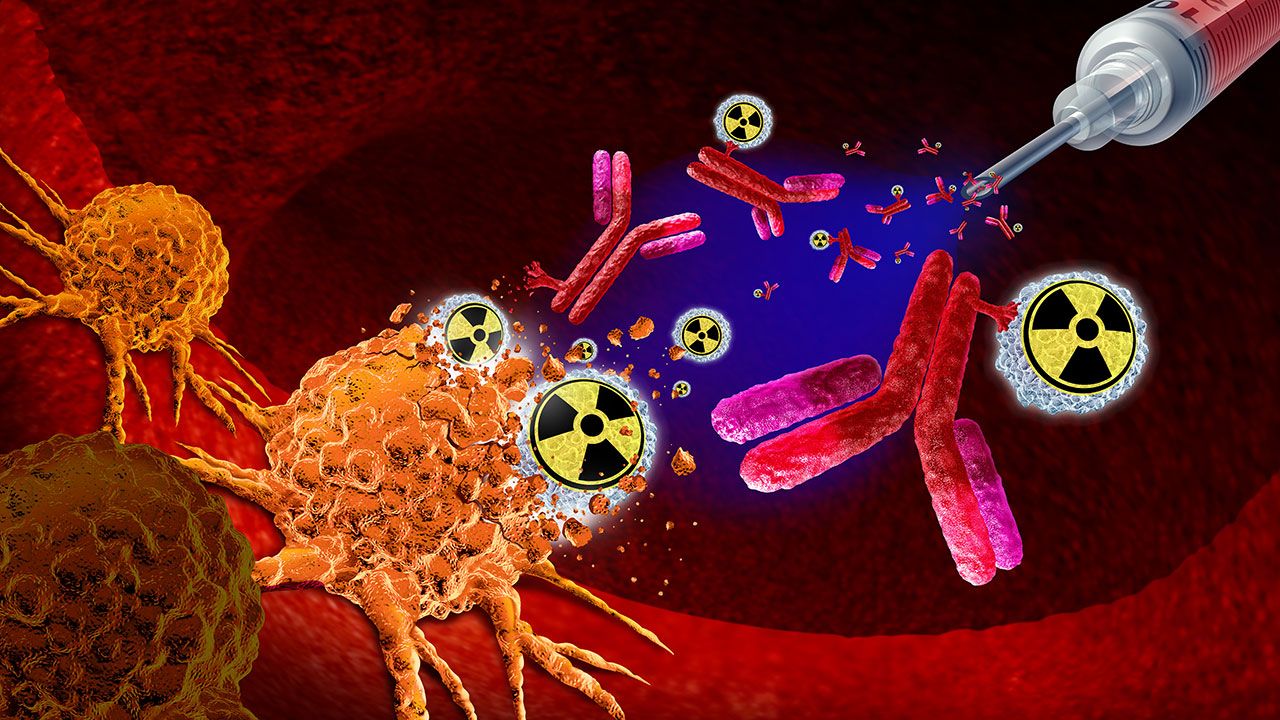News
Article
Pharmaceutical Technology
A New Route to Pharma GDP Compliance and Standardization
Author(s):
A consensus-based approach to GDP lies at the heart of a new industry-wide program seeking to rationalize, standardize, and harmonize the adherence to pharma transportation norms and regulatory guidelines.
Fabian - stock.adobe.com

The logistics associated with the safe and efficient physical transportation of pharmaceuticals is increasingly taxing the minds of logisticians as medicines become more complex and labile and their regulatory oversight intensifies. The statutory need to maintain the therapeutic and physical integrity of drugs during transit renders the management of quality and the adherence to good distribution practice (GDP) guidelines an absolutely critical part of the pharmaceutical supply process.
GDP’s European origins
In 2001, the European Union issued Community Code Directive 83 (1) defining a framework for the harmonization of the regulations relating to medicines including the rules governing their distribution. As far as GDP is concerned, this code built on the original EU GDP guidelines of 1994 (2) and has culminated, amongst other things, in the revised EU guidelines of November 2013 for human medicinal products (3) and the guidelines for APIs of March 2015 (4).
However, although the EU guidelines that were introduced in 2013 have formed a template for many subsequent national regulations, even within the EU the exegesis of GDP is open to wide interpretation. To a large extent, this is because GDP is (necessarily) non-prescriptive in nature and the guidance has been enacted in the form of a community directive rather than a regulation. This places responsibility in the hands of ‘National Competent Authorities’ which govern the authorization of wholesale distributors and their compliance with the guidelines.
For now, there is no single global GDP standard despite the harmonization efforts of bodies such as the International Council for Harmonisation (ICH), European Compliance Academy (ECA) and the Pharmaceutical Inspection & Co-operation Scheme (PIC/S). There are literally dozens of national and regional GDP standards in operation around the world. And although most of these are similar and operate under Marketing Authorization Holder (MAH) and Wholesale Dealer Authorization (WDA) type licensing systems, there can be much difference when it comes to detail and enforcement.
Systemic flaws
GDP guidelines are basically an extension to the GMP regulations which are in force around the world to govern the quality of manufacture of pharmaceuticals and their ingredients. These guidelines cover clinical trials as well as commercial drugs, APIs, and veterinary products. However, despite this common starting point, GMP is fundamentally different from GDP in that the GMP process takes place within a relatively controlled environment whereas GDP processes largely take place at arm’s length, outside the direct control of the manufacturer and involving numerous organizations of varying competence, expertise, and scale.
These supply chain dependencies are both critical and unavoidable, creating a high number of dilemmas and vexations that are endemic to the pharma-logistics process. These include:
- Supply chain fragmentation—logistics is one of the world’s most fragmented business sectors rendering it notoriously difficult to control and change.
- Fragility and low resilience—the vulnerability of the global logistics chain to large-scale disruption has been cruelly exposed by the COVID-19 pandemic.
- Variable infrastructure—huge handling and storage variabilities in terms of both capability and capacity, especially cold-chain, are apparent across countries and markets.
- Duplication of effort—collectively the industry unnecessarily replicates an enormous swathe of work especially in relation to asset utilization and quality compliance.
- Security vulnerabilities—these especially relate to counterfeit product, which is driving track-and-trace legislation.
- Poor consignment visibility—another product of structural fragmentation which precludes dynamic product monitoring and timely interventions.
- Supply chain opacity—the industry’s congenital ‘silo mentality’ and protectionism curtails co-operation and inhibits the development of supply chain trust.
- Training shortages—rising standards and regulatory demands have highlighted a dearth of good GDP training in many locations.
- Sustainability issues—the carbon footprint of shipping medicines (especially by air) is a growing concern.
- Technical standards—the absence of universal technical standards is an impediment to sustained improvement across the sector.
- Rising costs—the explosion in freight rates, both air and sea, over the past 12 months is forcing pharmaceutical companies to look closely at long-haul distribution costs.
Taken together, these factors create a degree of complexity that makes the consistent and reliable execution of GDP across the pharma supply chain a very elusive goal. Indeed, a survey (5)had no less than 40% of pharmaceutical shippers and logisticians citing the reduction of complexity as one of the biggest perceived benefits of greater GDP collaboration and harmonization (see Figure 1).
Figure 1. The perceived benefits of a more integrated approach to good distribution practice (GDP).

All this points to the existence of a huge amount of unnecessary replication, regulatory revisionism, compliance ambiguity, and reinventing of wheels when it comes to good distribution practice.
Questioning the logic of logistics
Any system for improving and streamlining GDP compliance is contingent on a comprehensive review of contemporary quality policies and procedures, for example, by questioning the rationale behind each individual pharmaceutical company:
- finding, assessing, and validating large numbers of different carriers and suppliers
- developing and maintaining discrete operational qualification (OQ) and performance qualification (PQ) test protocols
- designing multiple system and product evaluation and qualification programs
- conducting rigorous training programs for ever-changing products and pack-out permutations
- continuously replicating arguably interchangeable lane validations?
- generating large numbers of proprietary standard operating procedures (SOPs) and key performance indicators (KPIs)
- using/developing digital quality monitoring systems that are not interoperable.
GDP exceptionalism
Whether or not it is possible to pragmatically address all the various issues at play in the world of pharma, GDP is down to questioning embedded beliefs and practices as well as having a good understanding of the context in which they have developed. For instance, the notion that each and every medical product and shipping lane requires a dedicated transportation protocol needs to be challenged in the light of the latest technical and procedural developments. Although there will always be a need for unique and highly specialist transport arrangements for niche, very sensitive, and potentially dangerous pharmaceuticals, the vast majority of bulk prescription medicines and vaccines fit into one or two of just a small handful of generally accepted storage environments and temperature bands.
The argument that each and every transportation case is comprehensively different and therefore requires a unique approach is highly conjectural. When it comes to the transportation of medicines, the reality is that there is huge scope for a more standardized and harmonized approach to medicine distribution if only the various supply chain stakeholders are prepared to work collectively towards a common end.
Nevertheless, if such a recognized and widespread need for a more concerted and inclusive approach to GDP compliance exists in practice, it inevitably begs the question as to why the status quo prevails. Perhaps part of the answer can be gleaned from the survey mentioned previously, in which nearly half the respondents cited either personal or corporate inertia as the single biggest barriers to a more ‘joined-up’ approach to GDP (see Figure 2) (5).
Figure 2. Some observed obstacles lie in the path of good distribution practice (GDP) reform.

Multi-Modal Compliance and Standards program
It is against this backdrop that the British Standards Institution (BSI) and Poseidon, the independent pharma logistics network, came together in early 2021 to co-develop and execute the Multi-Modal Compliance and Standards (MMCS) program conceived as a consensus-driven foundation for industry-wide GDP standards and providing guidance through the growing maze of GDP regulations; one that is global in scope and covers all modes of carriage for bulk pharmaceuticals.
The MMCS program is aimed at pharmaceutical shippers and the entire distribution chain and is being designed to bring consistency, certainty, and continuous improvement to the complex process of meeting international quality and regulatory standards for the safe, efficient, and sustainable distribution of medicines, vaccines, and APIs.
“The entire pharma-logistics field stands to gain from this collaborative initiative which will improve quality, reduce compliance costs, and promote process and technical harmonization. A more joined-up approach to GDP compliance presents a sustainable way of improving outcomes, reducing costs, and extracting more value from logistics quality in these unprecedented times,” said Angus Metcalfe, BSI Group’s Managing Director, Global Healthcare, when the program was announced (6).
Universal need. With its industry-consensus approach, the MMCS program has been conceived as a universal GDP compliance system that fills the void in the market for a more harmonized and standards-driven approach to quality, qualification, certification, and training in the distribution of vaccines and other medicines.
The MMCS model is being designed to:
- greatly simplify the quality compliance processes especially from a shipper’s perspective
- remove huge amount of duplicated effort, overlap, and repetition amongst pharma companies
- proactively attenuate some of the risk inherent in the pharma logistics process
- introduce greater standardization of player, process, product, and system including universal technical standards for key supply chain elements
- bring pharmaceutical companies together to minimize process divergence, aggregate volumes, share resources, and collectively innovate
- reduce the high number of quality and regulatory non-conformances
- promote continuous GDP improvement as dictated by legal statute, common sense, and moral obligation
- provide shippers and logistics service providers (LSPs) with a common reference point for continuous improvement in quality and compliance
- integrate seamlessly into legacy logistics systems
- support and complement the need for greater sustainability when it comes to pharmaceutical logistics
- provide a comprehensive GDP training support program
- reduce compliance costs as a result of standardization and economies of scale
- create a system of shared supply chain audits to streamline risk management, vendor performance and GDP compliance (83% of survey respondents [5] are receptive to this)
- strengthen physical and digital supply chain security by creating a common platform for GDP interoperability.
Program scope and structure. Ultimately, the pharmaceutical industry has the end-goal of delivering safe and effective therapeutic outcomes for its patients. However, this noble, patient-centric goal involves a complex synthesis of numerous quality-related factors, with adherence to GDP being just one vital part of the overall equation. For this reason, the MMCS program needs to be not only technically valid and robust but, at the same time, flexible, scalable, affordable, and universally accessible to align with myriad supply chain stakeholders and accommodate different tactical approaches to GDP compliance. In turn, this will compel a degree of process standardization and unification in order to curtail unnecessary compliance permutations and vouchsafe GDP.
Figure 3 shows the main building blocks of the MMCS program. As a joined-up and universal risk management system for logistics, the MMCS will comprise multiple operational threads all configured and aligned to optimize their combined effect. Some of the more important strands of the program are as follows:
- Standards/guidelines—In the field of pharmaceutical GDP, there are a lot of regulatory and industry guidelines but precious few independent standards with the upshot that there is a variety of different approaches and interpretations. MMCS is investigating the creation of an overarching generic standard (or standards) covering pharma GDP processes and behaviors from a strategic perspective, and then underpinning this umbrella prescript with a series of technical standards as necessary. The fundamental keys being universality, repeatability, and consistency.
- Shared audit platform—A supply-chain audit scheme is expected to form an important element of the MMCS program with an important role in ensuring GDP–compliancy to a recognized industry standard. The MMCS team is currently assessing the demand and potential for a shared audit platform where the industry can mutually accept independent audit results and absolve the audited parties from having to endure multiple assessments from different principles. Such a common resource means that a successful audit would confer an industry-recognized compliancy status.
- Certification—Certification is a frequent requirement of pharma-logistics customers who need their suppliers to demonstrate that they have the appropriate quality systems in place and can meet pre-defined standards. Such conformity verification has an important role to play, and third-party certification will be another important element of the MMCS program. The design of the MMCS certification scheme will fully reflect the need for true program objectivity and ‘real-life’ legitimacy of the process and results.
- Training—GDP training is a core pillar of the MMCS program which is seeking to work closely with established training organizations and specialists to develop the necessary agenda, content, and formats for differing regions and markets. This training component will be managed by the well-established BSI Training Academy, which has a global reach and trains more than 200,000 people every year with an unrivalled portfolio of courses.
- Supply chain qualification—According to the United Kingdom’s Medicines and Healthcare products Regulatory Agency (MHRA) (7) , “this is one of the highest risk areas of Good Distribution Practice.” Yet despite this risk, end-to-end management of supply chain GDP is one of the weakest areas of regulatory compliance. Although it is the responsibility of licensed MAH and WDA organizations to qualify and periodically re-qualify their end-to-end supply chains in accordance with GDP and written technical agreements, it is extremely difficult, costly, and resource-intensive to successfully monitor and manage convoluted and constantly mutating logistical formations.
Figure 3. The interrelated constituent elements of the Multi-Mode Compliance & Standards (MMCS) program.

Industry consultation. Clearly, it is absolutely crucial that the component parts of the MMCS program accurately reflect the needs and priorities of the potential user base and other stakeholders.
For this reason, an official MMCS Consultation Cluster has been established comprising volunteer experts from a broad spectrum of the industry’s stakeholder groups to advise on the program and ensure its neutral, non-partisan status.
Figure 4 shows the current percentage breakdown of the MMCS Consultation Cluster by category. Input is being solicited from both individuals and organizations from right across the industry including responsible persons, established best-practice agencies, quality bodies, and regulatory authorities. The goal is to engage with the industry to improve, consolidate, and standardize the pharma-logistics process without unnecessary duplication, toe-treading, or reinventing of wheels.
Figure 4. Breakdown of Multi-Mode Compliance & Standards (MMCS) program Consultation Cluster by category.

Conclusion
The distribution of life-saving and life-enhancing medicines has recently been center stage in the public domain as a result of the continuing COVID-19 crisis. However, the pandemic is not only a tragedy; it is an opportunity and a turning point. With so much at stake and no end in sight, it is time for the industry to come together to find ways of improving and harmonizing how the industry complies with the rules surrounding the safe and efficient distribution of vital medicines.
References
1. EC, Directive 2001/83/EC of the European Parliament and of the Council of 6 November 2001 on the Community Code Relating to Medicinal Products for Human Use.
2. EC, 94/C 63/03 Guidelines on Good Distribution Practice of Medicinal Products for Human Use.
3. EC, 2013/C 343/01 Guidelines of 5 November 2013 on Good Distribution Practice of Medicinal Products for Human Use.
4. EC, 2015/C 95/01 Guidelines of 19 March 2015 on principles of Good Distribution Practice of Active Substances for Medicinal Products for Human Use.
5. BSI/Poseidon, “BSI/Poseidon MMCS program - GDP Consultation Cluster Survey Report, February 2022: “A review of pharma good distribution practice (GDP) based on industry-wide surveys conducted in November 2021.”
6. BSI, “BSI and Poseidon to Collaborate on Global, Multi-modal Good Distribution Practice (GDP) Compliance Program for Medicines and Vaccines,” Press Release, June 10, 2021
7. E. Krasteva and P. Brown, “Qualifications of suppliers and customers online: reliable or fake news?,” MHRA, Dec. 21, 2020. PT
About the authors
Courtney Soulsby is sector director, Healthcare & Life Sciences, BSI.
Alan Kennedy is director, Team Poseidon.
Article Details
Pharmaceutical Technology
Vol. 46, No. 3
March 2022
Pages: 40–44
Citation
When referring to this article, please cite it as C. Soulsby and A. Kennedy, “The State of Phage Therapy,” Pharmaceutical Technology, 46(3) 2022.
Newsletter
Get the essential updates shaping the future of pharma manufacturing and compliance—subscribe today to Pharmaceutical Technology and never miss a breakthrough.






